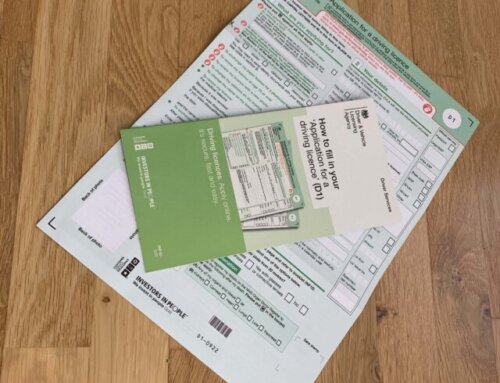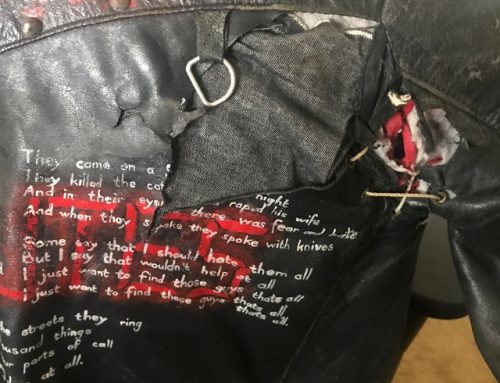The surprising parallel between underwear and copywriting guidance
Let’s talk about briefs
When I first composed the title of this article, I had no intention of discussing the merits of good underwear. But as I got into organising my thoughts, I realised this simple wordplay opened the door to a curious parallel … both the briefs you wear and the briefs you give your copywriter lay the foundation for how you’re seen in public.
With this in mind, it is my pleasure to explore the link between copywriting briefs and the outcomes they produce, via the concept of getting your underwear right.

Avoiding VPL
VPL, or Visible Panty Line to spell it out in full, is the phenomenon whereby underwear edges create a ridge that shows through clothing. Appearance-conscious dressers are careful to avoid it.
In copywriting terms, I believe there’s a parallel which I’ll refer to as IGE: Internal Goal Exposure.
It’s absolutely right for a copywriting brief to describe internal goals. But these goals shouldn’t be plainly visible in the resulting copy. As any copywriter worth their salt knows, desired outcomes have to be re-contextualised into audience lures. Yet this fundamental rule doesn’t always get followed, as the following real-life example demonstrates:
I was in a shop dedicated to selling merchandise for a well-known Dutch beer brand. The idea was pretty new at the time (yes, it was many years ago!), so I asked the shop assistant why the said brand was putting its name on items that had nothing to do with the act of drinking beer. Her answer: “[Brand] wants you to think of it when you’re doing other things in your life. Not just when you’re in the bar or the supermarket.” I could hardly believe my ears. She was reciting her employer’s brief. Revealing their strategy to a customer. I almost expected her to finish on “That way, [Brand] sells more beer and increases its market share”.
Of course she should have been churning out a re-contextualised, consumer-focussed version communicating an idea along the lines of “If you have good times when you drink [Brand], isn’t it kind of fun to be reminded of those when you’re doing something else?” She should have been talking about what I’d gain from buying the merchandise. Not revealing (a part of) the brand’s strategy for upping their sales.
This is a classic case of IGE, caused by a failure to transition from brief to audience-relevant copy. It’s a trap that businesses easily fall into. Every so often, when I’m sent copy to review, I find myself having to save the client’s blushes by ironing out IGE.
The question is, how good are you at ensuring your internal thought processes aren’t making their way into the public domain?
No such thing as one size fits all
Different body shapes, sizes and gender anatomies call for different underwear solutions. Could you imagine buying a ‘family pack’ of all-purpose briefs!?
Similarly, copywriting briefs have to consider the different ways in which a message will be delivered. And to whom.
Differences in context, audience, medium, format, space allocation and more mean one brief has to give rise to many different presentations. Trying to use the same copy for all your internal, external, B2B and B2C materials will lead to some pretty inappropriate results.
You might be able to hide ill-fitting underwear beneath loose clothing. But copy is always in plain sight. To avoid exposing your organisation as inattentive to detail, it’s essential to scrutinise each presentation and adjust as necessary.
Ideally you should figure out all the likely scenarios and describe them in your original copywriting brief. Then your copywriter can tackle all eventualities in one go, ensuring full cohesion while their mind is still in the zone.
Of course, unexpected opportunities can arise further down the line which call for small adaptations. Are you able to recognise when adaptation is necessary? How good are you at making appropriate on-the-fly adjustments? Where you see a one word swap, your copywriter might observe a contextual shift which throws an entire piece out of alignment, or doesn’t feed elegantly into the rest of your content flow.
Always think before publishing copy in a new scenario. If in doubt, get your copywriter to check things over. Being sure to brief them correctly!
Loose fit is a risky business
Over-generously sized underwear might take your mind off your expanding belly. But it could also leave you scrambling to hitch things up at an awkward moment.
In copywriting terms, being too accommodating in your promises or ambiguous in your claims can lead to a similar situation. You’ll make room for more responses. But if you’ve opened the door to expectations you can’t meet, you’ll need to make emergency fixes further down the line. Which results in an inelegant image and a lot of distraction.
Wouldn’t it be better to tighten up your copywriting brief to fit your capabilities, so the resulting copy only attracts appropriate response?
Are your briefs too restrictive?
Unless you’re a fan of crash diets, the discomfort of wearing underwear that’s too tight will most likely result in you consigning it to the bin.
If your copywriting brief is too restrictive, you’ll be throwing opportunities in the bin too. Yes, tight targeting for specific audiences is an absolute winner. But if your overarching message doesn’t consider the full breadth of your target audience and what you can offer them, the resulting copy will probably restrict your opportunities.
Think about all the eventualities. Will you want to stand and sit and stretch and move? Do your briefs allow freedom of movement? Or do they confine you to a single posture?







